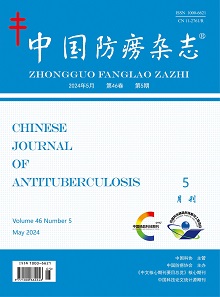Objective: To investigate the feasibility of deep learning models based on CT images for the differential diagnosis of renal tuberculosis. Methods: A retrospective analysis was conducted on 200 patients (400 kidneys) admitted to the Eighth Medical Center of the General Hospital of the PLA from September 2018 to August 2020, diagnosed with renal tuberculosis, renal tumors, pyelonephritis, normal kidneys, renal cysts, or hydronephrosis by pathological or clinical confirmation. The 400 CT images of the kidneys were divided into the tuberculosis group (n=114) and the non-tuberculosis group (n=286), and then further divided into a training set (renal tuberculosis: 85; non-renal tuberculosis: 235) and a test set (renal tuberculosis: 29; non-renal tuberculosis: 51) with the ratio of 8∶2. Deep learning models for the unenhanced phase, corticomedullary phase, nephrographic phase, and excretory phase of the kidneys were constructed using the ResNet18 and ResNet50 networks based on the training set. The diagnostic performance of the constructed models for renal tuberculosis was evaluated based on the test set, including the calculation of the area under the receiver operating characteristic curve (AUC), sensitivity, specificity, accuracy, and F1 score. Results: In the training set, the average age of the tuberculosis group ((41.27±11.75) years) was lower than that of the non-tuberculosis group ((54.05±13.97) years), with a statistically significant difference (t=5.753, P<0.05). In the test set, the average age of the tuberculosis group ((44.06±11.95) years) was significantly lower than that of the non-tuberculosis group ((56.12±10.73) years)(t=3.444, P<0.05). In the training set, males accounted for 66.7% (40/60) and females accounted for 33.3% (20/60) in the tuberculosis group, while in the non-tuberculosis group, males accounted for 60.9% (78/128) and females accounted for 39.1% (50/128); however, the gender distribution showed no statistically significant difference in the training set (χ2=0.009, P=0.924). In the test set, 64.3% (18/28) of individuals in the tuberculosis group were male, and 35.7% (10/28) were female; in the non-tuberculosis group, 58.7% (27/46) were male, and 41.3% (19/46) were female, with no significant difference (χ2=0.018, P=0.894). The AUC, sensitivity, specificity, accuracy, and F1 score of the four-phase images were all higher in the ResNet18 model compared to those in the ResNet50 model. The ResNet18 model demonstrated superior performance in the corticomedullary phase, with an AUC of 0.925 and corresponding sensitivity, specificity, accuracy, and F1 score of 93.1%, 86.3%, 88.7%, and 0.857, respectively. In contrast, the AUC for the medullary phase of the ResNet50 model was 0.858, with corresponding sensitivity, specificity, accuracy, and F1 score of 72.4%, 84.3%, 80.0%, and 0.724, respectively. Conclusion: The diagnostic performance of the ResNet18 model for renal tuberculosis based on multi-phase CT images was superior to that of the ResNet50 model. And the corticomedullary phase exhibited the best diagnostic performance in the ResNet18 model, indicating the high clinical application value.

 Wechat
Wechat